6 Classic Cocktails—and the Riffs That Take Them Up a Notch
My husband does a thing where he stands in front of our liquor cabinet with a glass, then starts opening bottles. He pours in a little of this and a tiny bit of that...and then a little of something else, and another thing, and maybe also one more other thing, and a touch of one last thing. I honestly can’t watch.
Making good cocktails definitely doesn’t mean that you have to be bound to the classics forever, but for a beginning home drink-maker, riffing on the classics can be a good place to start as you hunt for your own signature drink. In coming months, I’ll have many more drink recipes for you to try at home. Today, I’ll help you start with a few old-school cocktails, then step beyond the original ingredients to make something bolder, or bitter(er), or funkier, or mellower, or mezcal-ier.
Most of these recipes illustrate the general principles for riffing on classic cocktails that I’ve mentioned over here, each playing with classic drink templates without upsetting their balance. Let’s drill down, drink by drink.
Old Fashioned, but Make It Agave
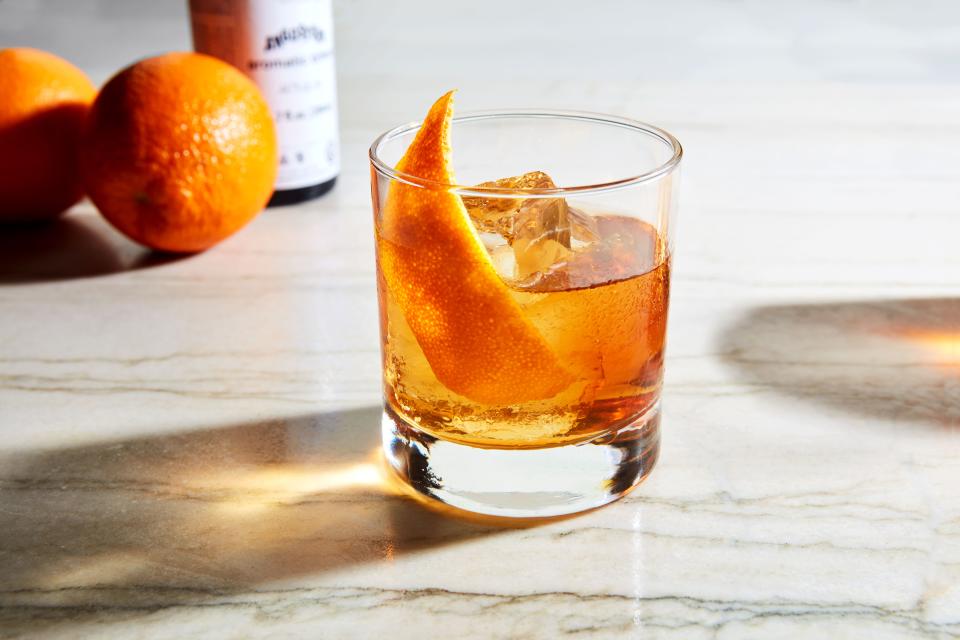
Old Fashioned Cocktail - HERO
Photo by Joseph De Leo, Food Styling by Michelle GattonThis is the O.G. (Or is it the O.F.?): Just whiskey, sugar, bitters, ice. The beauty of a drink this simple is that it’s a window on a spirit, whether that spirit is whiskey or something else entirely.
But you say you don’t like Old Fashioneds? It could be that too much simple syrup was added to the Old Fashioneds of your past, which is easy to do if you’re pouring into a barspoon held over a glass. And while plenty of folks beg to differ, that’s the reason Neff prefers to start with a sugar cube, dousing it with bitters and a few drops of water, muddling the cube down to a paste. Neff also likes the drink to evolve: the first sip is nearly pure whiskey, but the cocktail dilutes and sweetens as you slowly make your way to the bottom of the glass. Try it both ways and see which you prefer.
And then, venture out beyond your basic rye or bourbon. If you have a fancy new bottle of pretty much any aged spirit in your home bar, this just might be the drink to start with. “An Old Fashioned is a great way to get introduced to a bottle that's on the bold side, flavor-wise: It takes away the sting a little bit of something like mezcal or Scotch, any spirit that might take some time to appreciate, explains Michael Neff, bar director of the Cottonmouth Club in Houston. “You won’t know if you like a certain bottle of tequila based on its Margarita.”
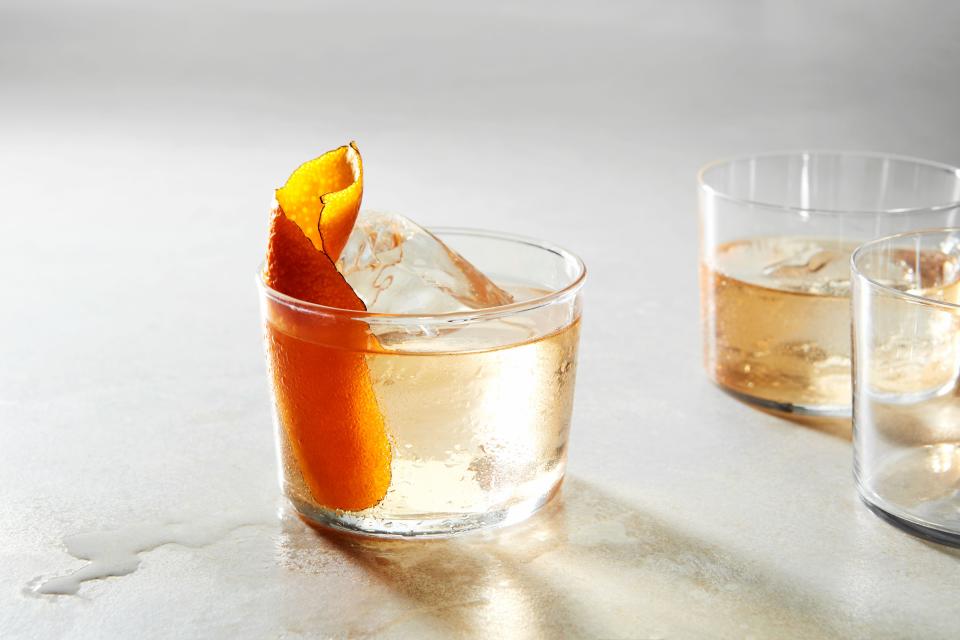
Oaxacan Old Fashioned Cocktail - HERO
Photo by Joseph De Leo, Food Styling by Michelle GattonPerhaps more than any other O.F. riff, New York bartender Phil Ward’s Oaxaca Old Fashioned has become a modern classic. It’s precisely balanced, with the richness of barrel-aged reposado tequila giving the drink the creamy texture you need, and the mezcal adding smoke that lingers on your tongue like good chocolate. It’s a strong drink that’ll get you through a cold night. Don’t skip the orange twist, which helps to brighten things.
The Oaxaca Old Fashioned sticks with the agave theme and uses agave nectar as a sweetener, but if you’re trying out other spirits, you can play with maple syrup, coconut sugar, honey, etc. Or try out a little bit (just a little!) of any Italian bittersweet liqueur that you have on hand—it’ll add a touch of sugar and a bitter punch. Or use that allspice dram you bought for making tiki drinks. Or swap in sweet vermouth… which would give you, yes, a Manhattan.
Manhattan, but Make It Bitter

Little Italy Cocktail - HERO
Photo by Joseph De Leo, Food Styling by Michelle Gatton. Glassware by Riedel.Whiskey, sweet vermouth, and bitters: The Manhattan is a rounder, richer drink than the Old Fashioned, and that dose of sweet vermouth just calls out to be fiddled with. If you, like me, have a taste for all things bitter, sub out some of the sweet vermouth in this classic cocktail for an amaro like Cynar. (The one with the artichoke on the label; yes, artichoke leaves are among the flavoring agents.) Stir it up, and you’ve got the bold, vegetal Little Italy.
If your bar is particularly well-stocked, and you want to explore even further, I highly recommend the Sforzando, which was created by Eryn Reece and appears in New York Cocktails. It's an intriguing take on the Manhattan, with a split base of mostly peppery rye stirred with a touch of smoky mezcal. Instead of sweet vermouth, you use a mix of dry vermouth and Benedictine, a honeyed, herbal liqueur that enriches the drink while skipping the cherry notes of sweet vermouth. I am always a sucker for mezcal-laced takes on any cocktail, but this one does a particularly lovely job of showcasing the agave spirit’s earthy flavors without letting them take over.
Sazerac, but Make It Smooth
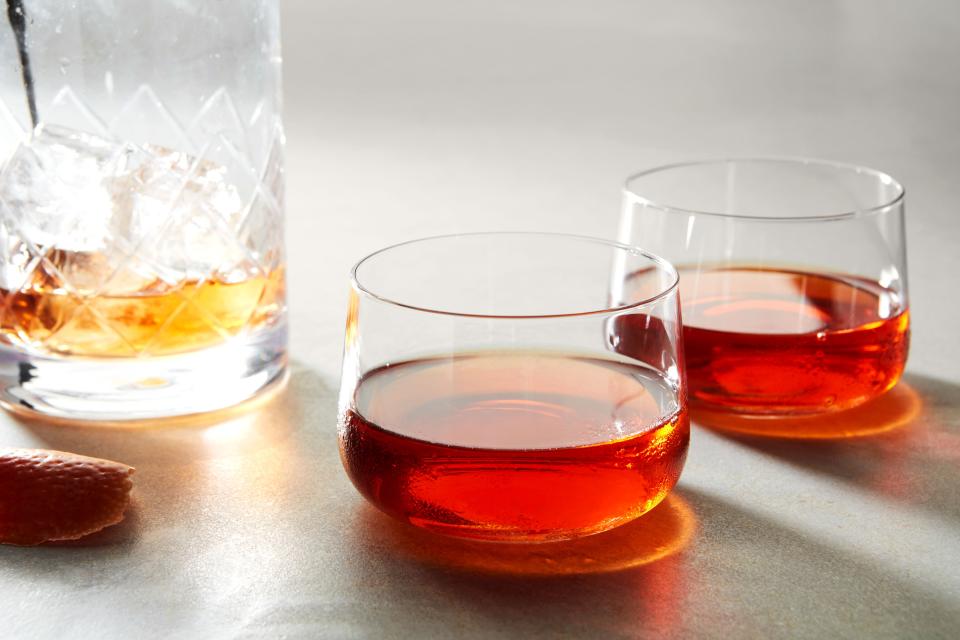
That'll Take the Edge Off Cocktail - HERO
I probably shouldn’t admit this, but I’ve never really had my Sazerac moment, the one where everything about this drink makes sense. Better head back to New Orleans, I guess.
The cocktail, which is essentially a rye Old Fashioned, dashed with Peychaud’s bitters and served without ice in a glass rinsed (or sometimes spritzed) with anisey Herbsaint or absinthe, has always felt a little bit disjointed to me. Maybe it’s that menthol-cool blast of the absinthe rinse, the slightly licoricey layer from the blood-red bitters. But my fellow booze-writers Carey Jones and John McCarthy have a take that I adore. They start with the classic, which they describe as “an uncompromisingly stiff drink, bold on whiskey, with an intriguing herbal-bitter element from the absinthe and Peychaud's bitters.” But then their recipe brings in a few other ingredients to unite the drink’s two sides: a touch of sweet vermouth, which mellows out the whiskey, and green Chartreuse, which is herbal and spicy and boozy, bridging the gap between the absinthe and the rest of the drink. Carey puts it well: “Together, it's a touch smoother than a Sazerac, while not easing back on the powerful appeal of the original.”
Negroni, but Make It Mellow (Or Even More Bold!)
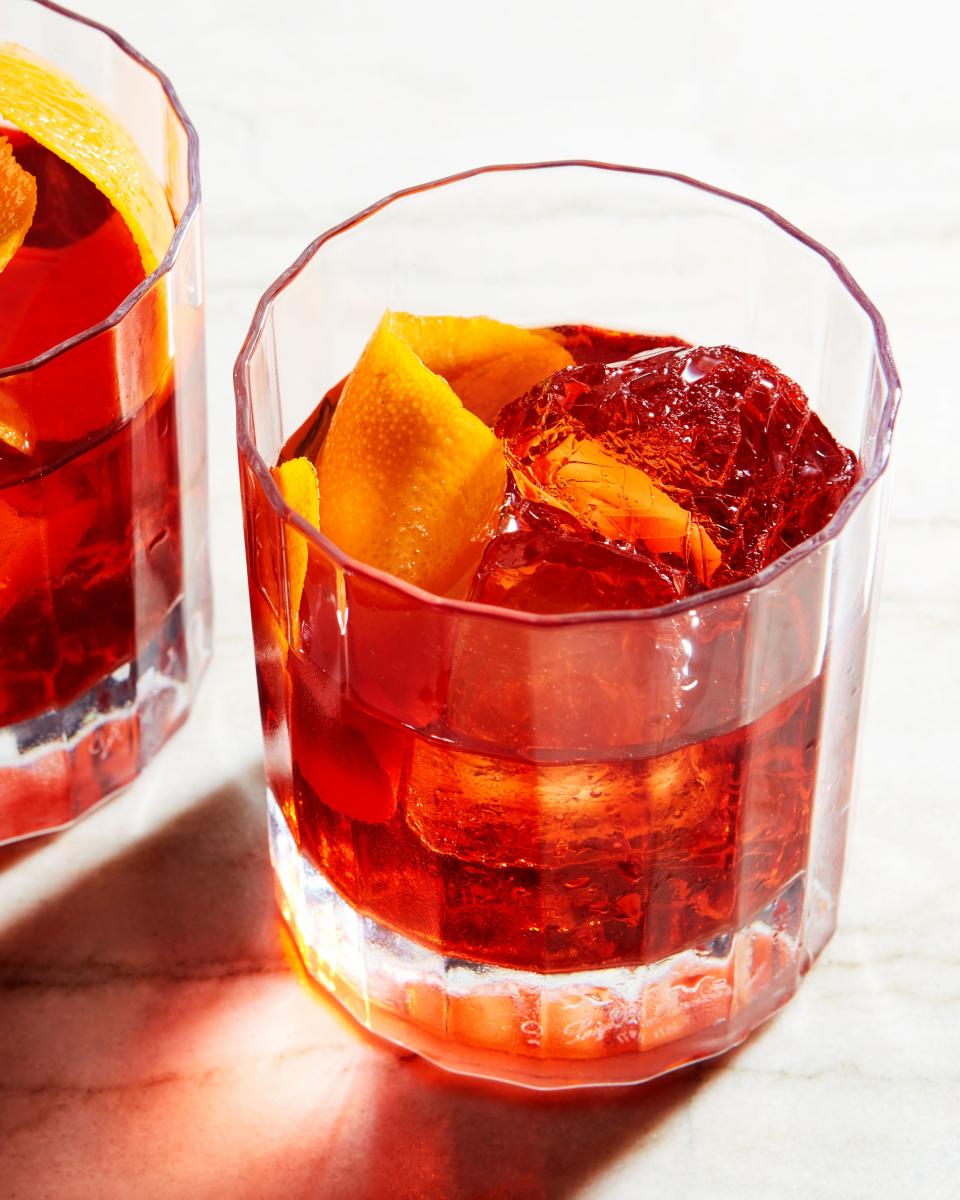
Negroni Cocktail - IG
Photo by Joseph De Leo, Food Styling by Michelle GattonThis classic Italian combo of gin, Campari, and sweet vermouth in equal quantities is just about the easiest recipe I can imagine. One, one, one, twist a citrus peel over the top, and drink.
But I don’t ever make it that way. I like it with a little extra gin, to balance out the bittersweet punch. (Think you don’t like Negronis? Taste that version.) And I really like a Negroni with whiskey (ok, then it’s called a Boulevardier), and once in awhile, with funky rum (or with rum and sherry.) There’s a bold Negroni riff for every day of the week, and I tend to like them all.
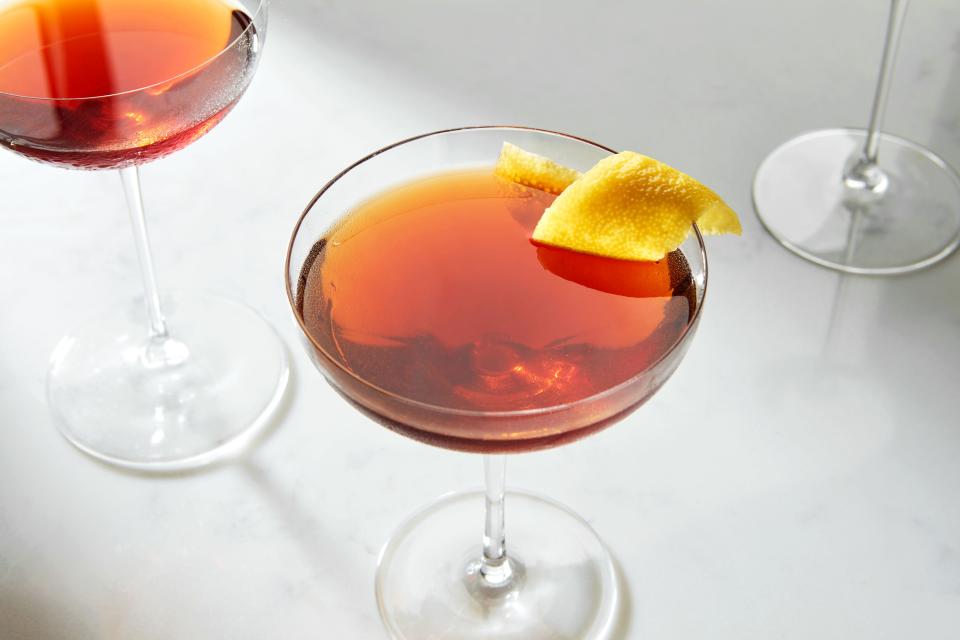
Bittersweet Symphony Cocktail - HERO
Photo by Joseph De Leo, Food Styling by Michelle GattonBut when I want to dial down my Negroni a bit, this recipe from Jeffrey Morgenthaler is the one I turn to. The Bittersweet Symphony is juicy and luscious, with loads of orange from the use of Aperol instead of its brawler sibling, Campari. (It also calls for Punt e Mes, a particularly herbaceous, bitter Italian vermouth, instead of your more standard sweet version, and works particularly well with juniper-forward gins rather than more floral options.) The result is a silky, smooth (but still bitter) cocktail rather than a brash one, with carefully attenuated details: a bit of extra gin, a bright lemon twist, a tight weaving of flavors that work really well together. Try this cocktail over ice in warmer months.
Want more mellow Negroni-ish recipes? When the weather gets really warm, just take your Negroni and freeze the dang thing. Or see what happens when the Negroni meets the tart, fizzy French 75.
Aviation, but Lose the Violette
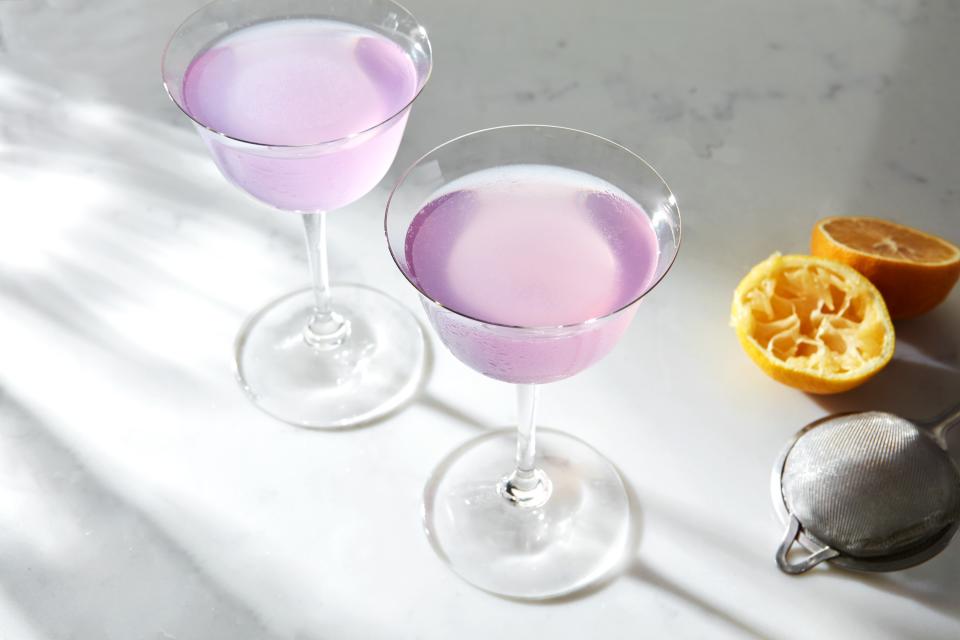
Aviation Cocktail - HERO
When I ask fellow drinkers about the classic cocktails that they just can’t bring themselves to love, the Aviation is often first on the list. The issue is the Crème de Violette, a long-forgotten ingredient that was revived and championed in recent decades. For a long time, recipes for the Aviation left the stuff out; you couldn’t buy it anywhere. But in the heady early days of the cocktail revival, Jim Meehan says, “we had that yearning for ye olde time when things were done right.” Meehan says that now it’s one of his “mea culpas”—he’s “come to think that, most of the time, Crème de Violette makes almost anything you mix with it taste like soap.”
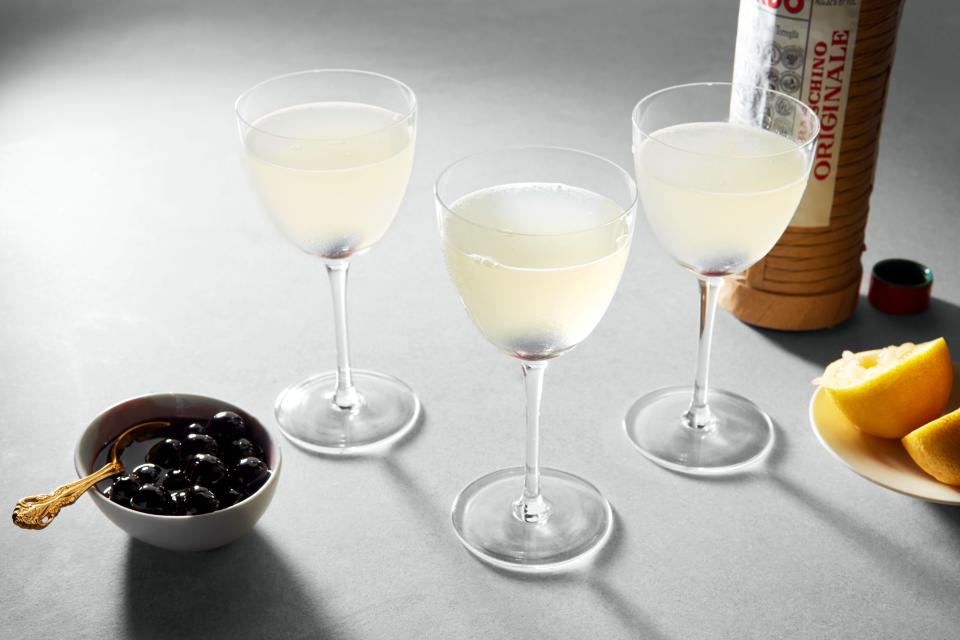
Casino Cocktail - HERO
And while you can just make a version of the Aviation without the soap, Oakland bartender Jennifer Colliau offers another classic instead: “I never cared for the Aviation,” she admits, saying that Violette always reminded her of “body product.” But when she came across the Casino in The Savoy Cocktail Book, she noticed that it’s “essentially the same drink but with orange bitters instead of violette. I was so pleased!” she says.
You’ll likely enjoy the Casino even if the Aviation as we’ve come to know it isn’t your thing. Both drinks are from the Daisy family, meaning they’re made with a spirit, citrus, and a flavored sweetener. (A Margarita is a Daisy too, with tequila, lime, and orange liqueur.) Originally, the Casino featured Old Tom Gin, which is lightly sweetened, but Colliau’s favorite recipe is adjusted for the London Dry gin you’re more likely to have on your shelf. Maraschino adds a subtle almondy note; it’s a delicate, tart, and aromatic drink. I’m pretty sure you won’t miss the purple.
Originally Appeared on Epicurious

